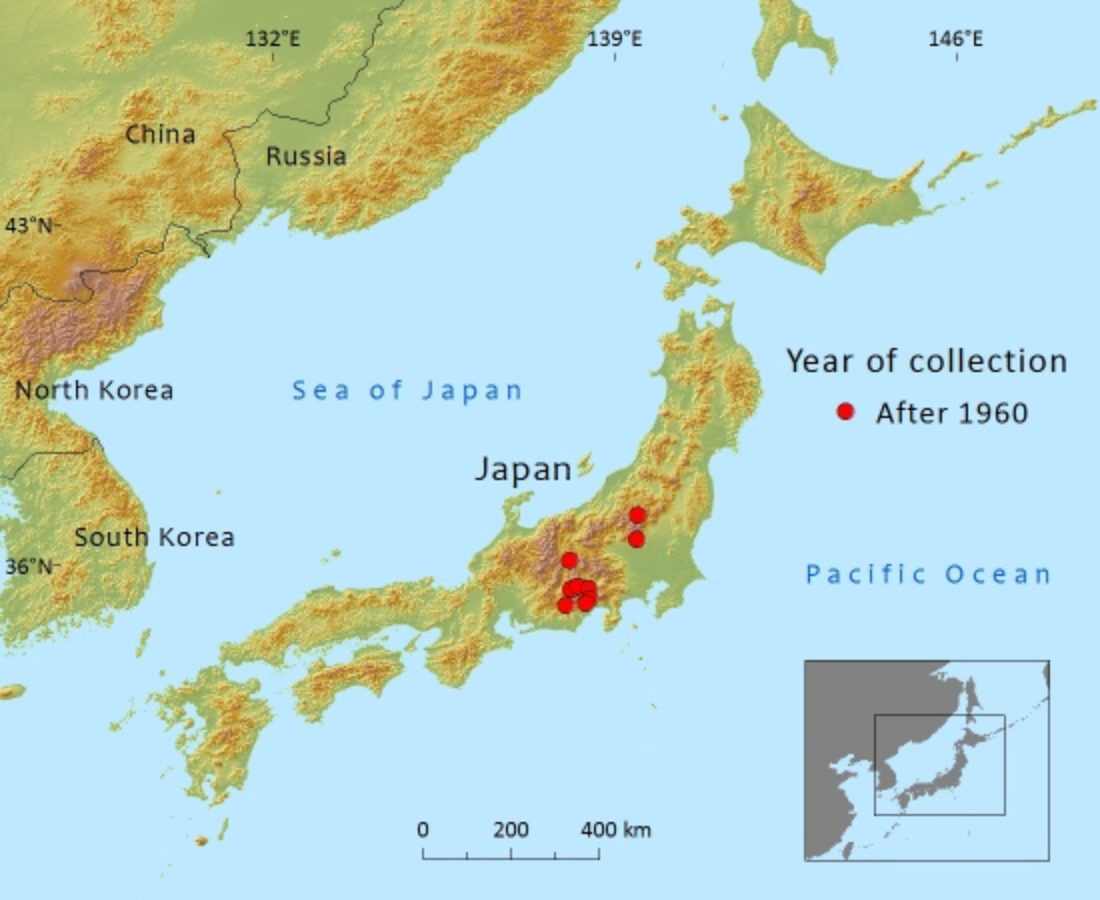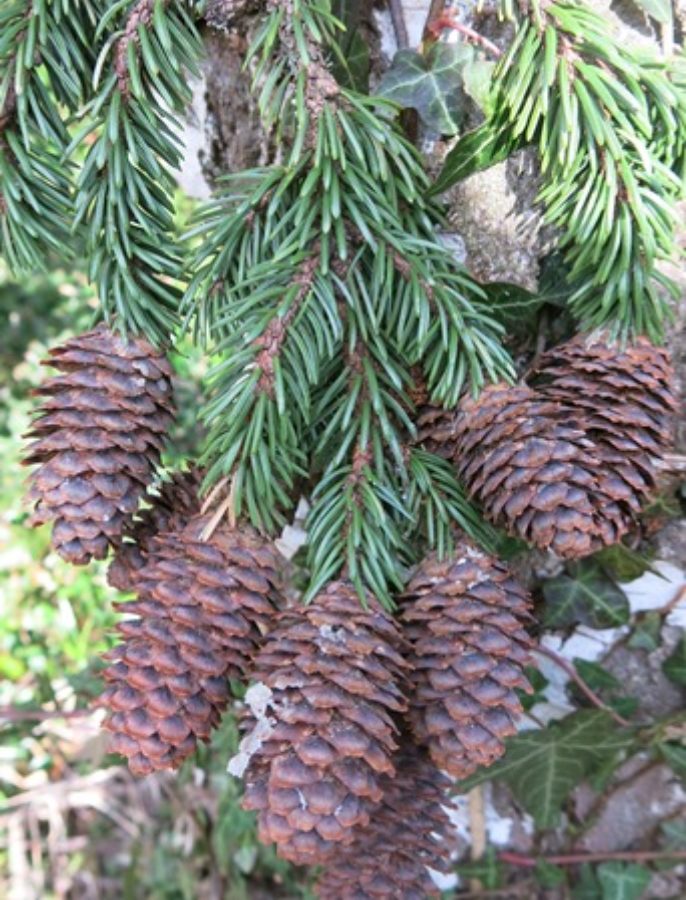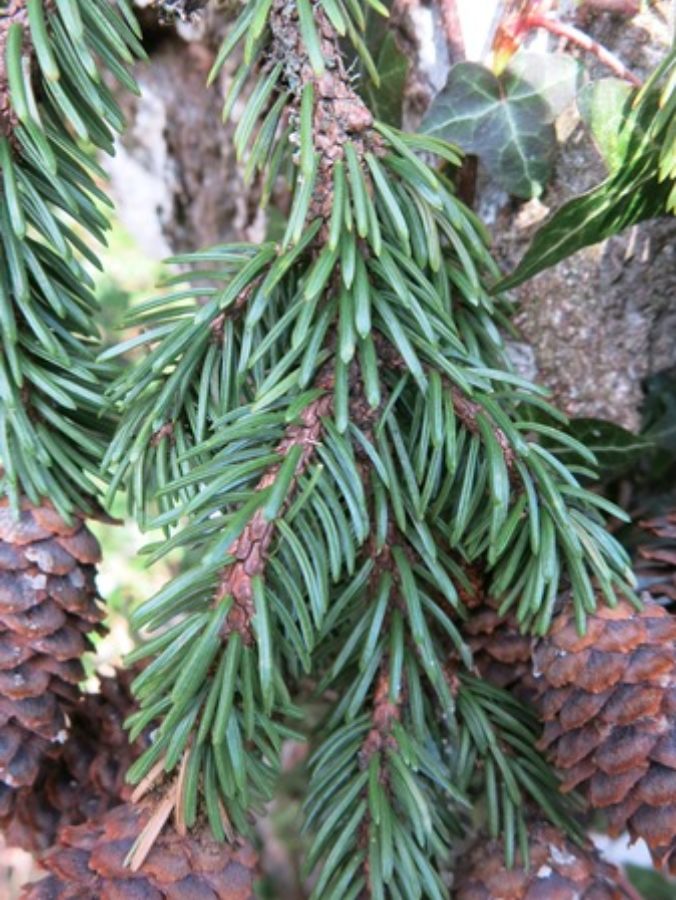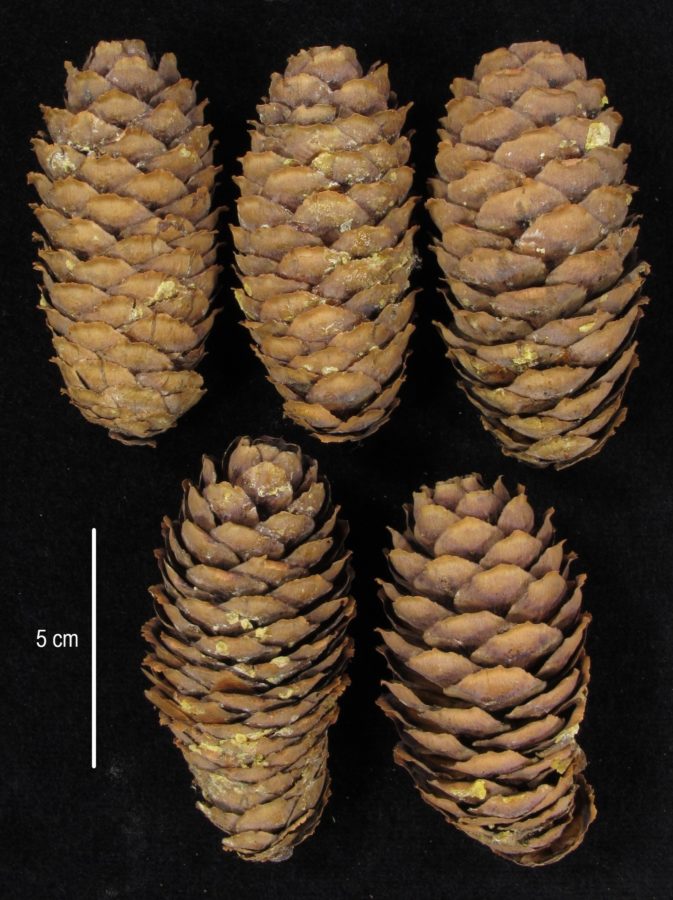Pinaceae
Picea alcoquiana
Endemic to Japan where logging has caused a considerable reduction in the population
Description
Taxonomic Notes
The IUCN Redlist recognises three varieties of Picea alcoquiana - var. reflexa
(Shiras. & Koyama) Fitschen, var. acicularis (Shiras. & Koyama) Fitschen and the nominate variety. The first, var. reflexa is mainly recognised on the basis of having reflexed cone scales and was first described in 1913 from the Hayakama and Ohi Valleys in Yamanashi and Shizuoka Prefectures. A range wide survey including more than 800 individual trees found that this character varied continuously on individuals and throughout the total population and therefore could not be used to distinguish var. reflexa from the nominate variety (Aizawa & Kaji 2006). In addition, var. acicularis (sometimes referred to as Picea shirasawae Hayashi) has been recognised as a morphological variant of Picea koyamae Shiras. on the basis of its genetic profile (Katsuki et al. 2004). Consequently, neither of these varieties should be recognised.
Human Uses
This is a timber tree of minor importance due to its scarcity, but it has undoubtedly been logged with other spruces (P. jezoensis subsp. hondoensis) and conifers. Much of its wood is processed to pulp for the paper industry, but more specialized uses are furniture making and (in Japan) musical instruments. This species has been introduced to Europe and the U.S.A. but remains uncommon there and mostly restricted to arboreta and some large parks of private estates, where it may still be known under the later name Picea bicolor.
References and further reading
- Aizawa, M. & Kaji, M (2006). Taxonomic Review of Picea alcoquiana var. reflexa (Pinaceae) based on cone morphology. Acta Phytotax. Geobot. 57(2):165–175
- Aizawa M, Yoshimaru H, Katsuki T & Kaji M. (2008) Imprint of post-glacial history in a narrowly distributed endemic spruce, Picea alcoquiana, in central Japan observed in nuclear microsatellites and organelle DNA markers. J Biogeogr. 35:1295–1307.
- Katsuki, T., Farjon, A. & Carter, G. (2013). Picea alcoquiana. In: IUCN 2013. IUCN Red List of Threatened Species. Version 2013.1. Downloaded on 08 July 2013.
- Katsuki, T., T. Sugaya, K. Kitamura, T. Takeuchi, M. Katsuta & H. Yoshimaru 2004. Geographic Distribution and Genetic Variation of a Vulnerable Conifer Species, Picea koyamae (Pinaceae). Acta Phytotaxonomica Geobotanica 55(1):19-28.
- Shimizu, T. 1992. Taxonomy and phytogeography of the conifers, with special reference to some subaline genera (2) the genus Picea. Japanese Journal of Japanese Botany 9:3-11.







